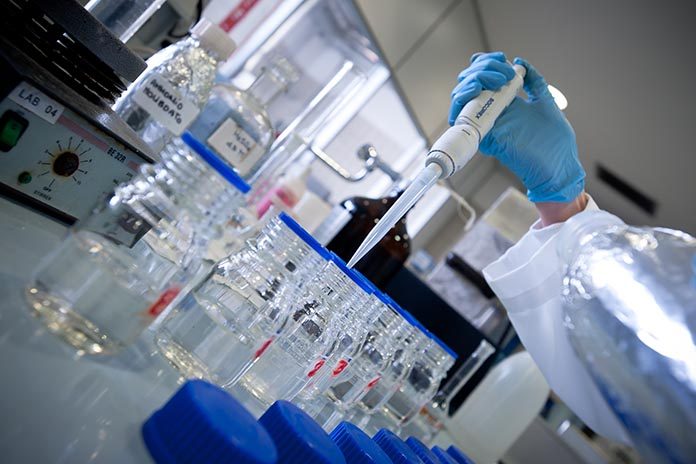
Biosecurity, defined as all measures taken to prevent both the introduction and the spread of infectious agents on the farm, is of key importance in avian production, in particular in the antibiotic-free one.
High levels of protection against diseases are reached with the concomitant application of external and internal biosecurity measures. In the first category are included all the procedures preventing the introduction of off-farm pathogens, e.g purchase of 1-d-old chicks, off-farm movement of live animals, feed and water supply, removal of dead animals and manure, entrance of visitors and personnel, supply of materials, infrastructure and biological vectors and location of the farm. On the other hand, internal biosecurity includes all measures that aim at preventing the within-herd spread of pathogens and is subdivided into 3 subcategories: disease management, cleaning and disinfection and materials and measures between compartments.
Recently in 5 European countries a study involving 400 conventional broiler farms was conducted in order to quantify the overall level of biosecurity, thereby identifying key aspects that would require improvements (Limbergen et al., 2017). Although the score varied by country, it was revealed that the investments in internal biosecurity regard mainly the application of good vaccination protocols to the detriment of detailed hygienic procedures.
However, the use of effective cleaning and disinfection protocols (C&D) is a crucial step in reducing the infection pressures on broiler farms and endemic animal diseases and the importance of the application of a good cleaning step before the disinfection is often underestimated.
Organic residues, as faeces or feathers, may contrast the efficacy of disinfectants by forming a protective barrier for bacteria, in particular for the ones producing biofilm, as Salmonella spp. e Campylobacter spp. Thus, the maximum efficacy of disinfection procedures on surfaces is obtained with appropriate removal of organic matter, using for example alkaline detergents that have high dissolving power on organic residues.
The disinfection step is finally of fundamental importance at the end of a production round in reducing the infection pressure from microorganisms as well as in the transmission of pathogens from one flock to the next. The active ingredients more utilized as disinfectants in poultry production are formaldehyde and glutaraldehyde, which are bactericides, sporicides, and fungicides.
Recently, a group of scientists tested the effectiveness of different C&D protocols in 4 different broiler houses (Luyckx et al., 2015). All the farms were first mechanically and chemically cleaned with sodium hydroxide, washed with high pressure water and disinfected with products consisted of a combination of quaternary ammonium compounds, aldehydes, and alcohols. Before the disinfection step, two farms were left overnight soaking with water (cold and warm). The microbiological analysis revealed a strong reduction in the total aerobic flora and Enterococcus spp. counts in the two broiler houses that were soaked overnight, whether or not warm or cold water had been used during cleaning. Furthermore, in the broiler houses that were soaked overnight the water consumption was lower compared to the others; this means that a preceding soaking step reduced the amount of water needed to the clean broiler houses afterwards.
Soaking can loosen organic material, making removing it easier during high pressure cleaning and improving the efficacy of disinfectants. Although soaking is time-consuming, the working time spent on cleaning after soaking is less than when cleaning without a preceding soaking step. Similar results were found in another study, where the application of detailed C&D protocols resulted effective on the reduction of environmental Campylobacter spp. counts leading to a reduction not only in the pathogen elimination but also in carcasses contamination at the slaughterhouse (Burbarelli et al., 2018). With regards to the efficacy of disinfection, it is of fundamental importance using disinfectants at the concentration and for the contact time recommended. Furthermore, in order to avoid the establishment of bacterial resistance, it should be considered to rotate active ingredients.
The application of detailed cleaning and disinfection programs can improve broilers’ productive performances, lower the mortality rate and reduce the spread of pathogens, including zoonotic ones (Burbarelli et al., 2018; Sharma B., 2010). Considering that in poultry the satisfactory performance expression is related to intestinal health, the reduction of pathogens in the environment can have consequent beneficial effects on the microbiota balance and on the immunity system of the animals, both important factors for productivity (Ka-Oud, Zakia and Kamel, 2008; Bragg and Plumstead, 2003). Last but not least, the optimization of biosecurity, and in particular of the C&D programs, can gradually lead to a reduction in the antimicrobial use in the farms (Gelaude et al. 2014).
References are available on request
















